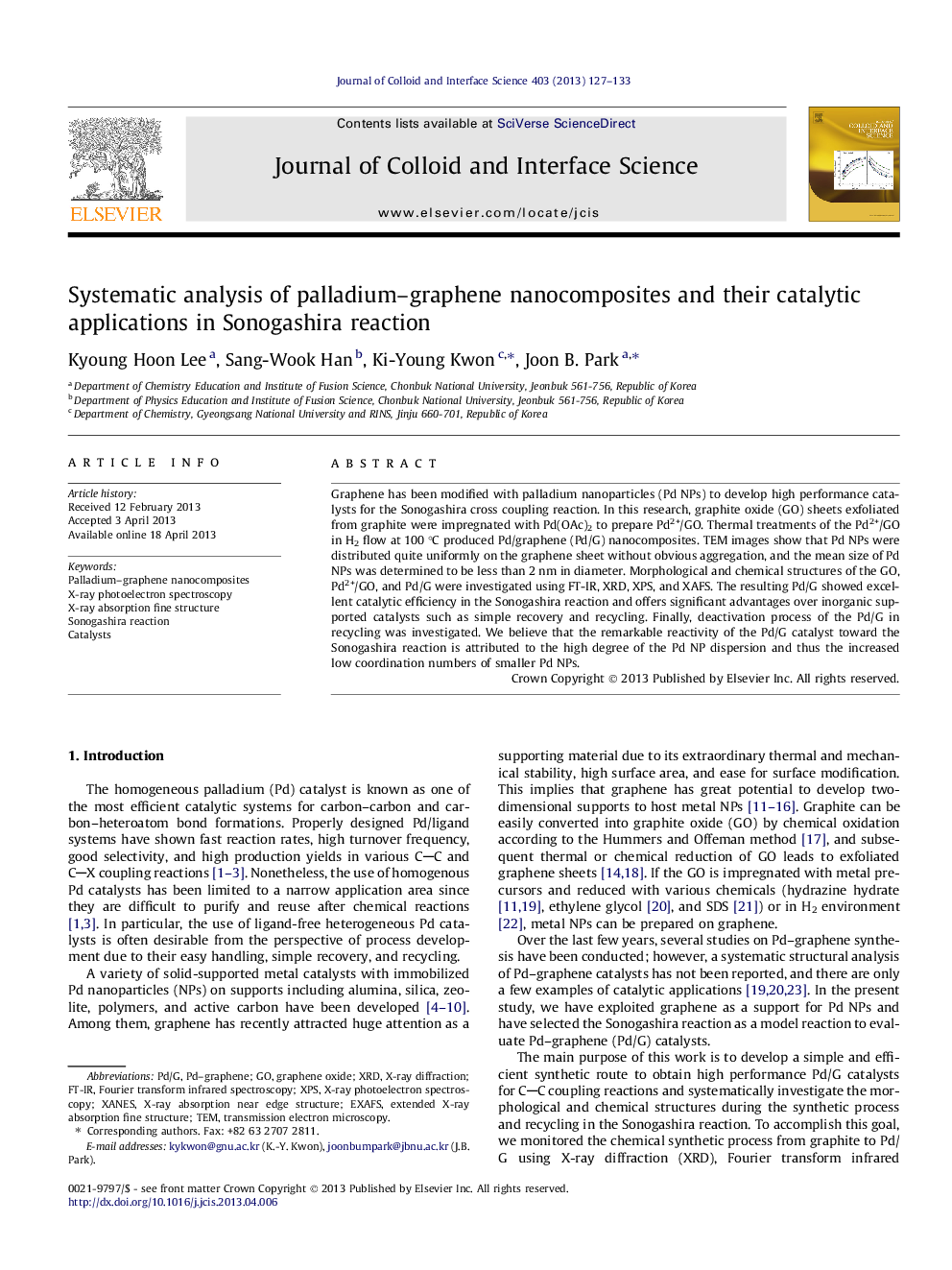| Article ID | Journal | Published Year | Pages | File Type |
|---|---|---|---|---|
| 607691 | Journal of Colloid and Interface Science | 2013 | 7 Pages |
•Pd–graphene nanocomposites(Pd/G) were synthesized for catalytic applications.•A systematic structural analysis of Pd–graphene catalysts has been performed.•Pd nanoparticles(NPs) were homogeneously dispersed on graphene.•The Pd/G showed excellent catalytic efficiency in the Sonogashira reaction.•Deactivation process in catalytic recycle has been investigated.
Graphene has been modified with palladium nanoparticles (Pd NPs) to develop high performance catalysts for the Sonogashira cross coupling reaction. In this research, graphite oxide (GO) sheets exfoliated from graphite were impregnated with Pd(OAc)2 to prepare Pd2+/GO. Thermal treatments of the Pd2+/GO in H2 flow at 100 °C produced Pd/graphene (Pd/G) nanocomposites. TEM images show that Pd NPs were distributed quite uniformly on the graphene sheet without obvious aggregation, and the mean size of Pd NPs was determined to be less than 2 nm in diameter. Morphological and chemical structures of the GO, Pd2+/GO, and Pd/G were investigated using FT-IR, XRD, XPS, and XAFS. The resulting Pd/G showed excellent catalytic efficiency in the Sonogashira reaction and offers significant advantages over inorganic supported catalysts such as simple recovery and recycling. Finally, deactivation process of the Pd/G in recycling was investigated. We believe that the remarkable reactivity of the Pd/G catalyst toward the Sonogashira reaction is attributed to the high degree of the Pd NP dispersion and thus the increased low coordination numbers of smaller Pd NPs.
Graphical abstractFigure optionsDownload full-size imageDownload high-quality image (117 K)Download as PowerPoint slide
